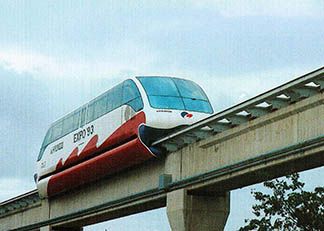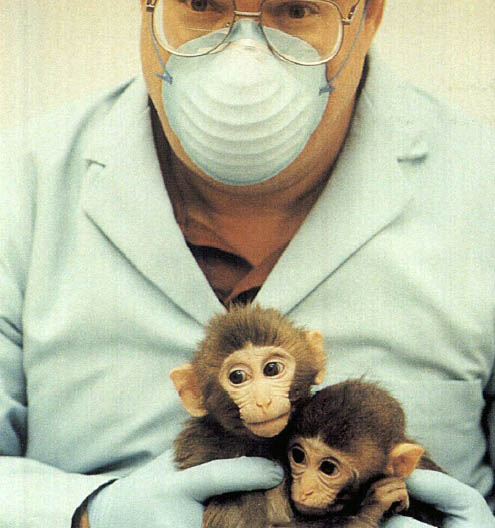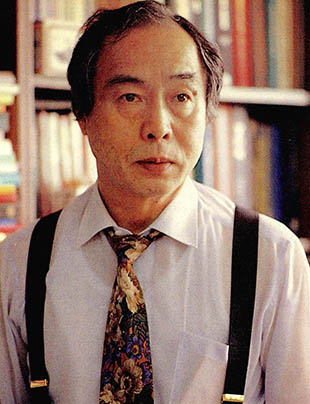Claire Robertson, a 49-year-old former nurse who six years ago suffered brain damage due to a rare viral infection called herpes encephalitis. Now an amnesiac who is unable to recognize faces, Claire lives in a world in which even her lifelong friends appear as strangers. Memory is so foundational to human relationship.
There is no cure for Claire’s memory loss. The brain remains far too complex an organ for modern medicine to master, let alone reanimate after parts of it die off. Primitive memory aids - diaries, photo albums, reminder alerts on electronic devices such as smartphones - remain the most effective tools for helping amnesiacs like Claire cope with their condition. But the technology available to neuropsychologists is evolving fast, and Claire is among the first brain-injury patients to benefit from new technology.
The portions of Claire’s brain most damaged by the virus are known as the hippocampi, two deep, seahorse-shaped structures where new memories are formed and others are retrieved. Destruction of the hippocampi causes memory loss but only of a particular kind. Claire, like most such amnesiacs, retains a functioning procedural memory. She remembers, for instance, how to drive a car, and she could learn to play the piano if she wanted, although she would have little or no memory of receiving lessons. Likewise, Claire’s so-called semantic memory remains largely intact; her brain has preserved previously learned facts (Paris is the capital of France; her husband’s name is Ed), and she can retain a limited amount of new information. But she can rarely remember the sensations of an experience - the sights, sounds and feel, what psychologists call her episodic memory. Episodic memory store memory of past personal experiences, while semantic memory is the part of memory that stores facts and general knowledge.
This is where the new memory-enhanci ng technology can help. Developed by Micro soft and called the Sensecam, the camera hangs around an amnesiac patient’s neck and automatically takes photos with a wide -angle lens every 30 seconds and when it senses movement or a change in lighting. The patient can download the pictures later and review them in sequence, helping their lost memory. Their episodic memory is lost, but reviewing photos in the Sensecam will help them to understand what they have experienced that day.
해석 기억으로서의 사진들
클레어 로버트슨은 49세의 전직 간호사다. 그녀는 6년전 헤르페스 뇌염이라는 희귀병에 감염돼 뇌손상을 입었다. 지금은 사람의 얼굴도 인식하지 못하는 기억상실증 환자가 된 클레어는 평생 사귄 친구가 낯선 사람으로 다가오는 세계에 살고 있다. 기억은 인간관계에서 가장 기본적인 것이다.
클레어의 기억상실을 치유하는 방법은 없다. 인간의 두뇌는 현대의학이 마음대로 다루기에는 아직 너무 복잡한 기관이다. 그 일부가 손상된 이후 이를 다시 재생시키는 것은 더욱 어렵다. 기억을 도와주는 원시적인 도구들(일기장, 사진첩, 스마트폰과 같은 전자기기를 활용하는 알람 등)은 클레어같은 기억상실증 환자가 그들의 병마와 싸우는 것을 도와준다. 그러나 신경심리학자들이 활용할 수 있는 기술은 빠르게 진화하고 있다. 클레어는 새로운 기술의 도움을 받는 초기 두뇌손상 환자 중 한 명이다.
클레어의 두뇌 중 바이러스에 의해 가장 많이 손상 받은 부위는 해마라고 불리우는 부위다. 두뇌 깊숙이 위치한 해마는 바다생물인 해마(海馬)처럼 생긴 두 개의 구조로서 새로운 기억이 형성되고 지난 기억을 끄집어내는 곳이다. 해마의 손상은 기억상실을 가져오지만, 이때 손상되는 기억은 특정한 종류의 기억뿐이다. 대부분의 기억상실 환자처럼 클레어의 ‘절차기억’은 잘 작동한다.
 예를 들어 그녀는 운전하는 법을 기억하며 (레슨받은 경험 자체는 잊어버리겠지만) 그녀가 원한다면 피아노를 연주하는 법도 배울 수 있다. 마찬가지로 클레어의 ‘의미기억’은 대체로 원활하게 작동한다. 그녀의 두뇌는 이전에 배운 사실을 잘 기억하며(예를 들어 프랑스의 수도는 파리이고, 그녀 남편의 이름은 에드라는 사실 등) 그녀는 한정되지만 새로운 정보를 받아들일 수도 있다. 그러나 그녀는 심리학자들이 ‘사건기억’이라고 부르는 시각, 소리, 촉감 등 경험의 감각은 기억하지 못한다. ‘사건기억’은 과거의 개인적 경험을 저장하며, ‘의미기억’은 사실과 일반적인 지식을 저장한다.
예를 들어 그녀는 운전하는 법을 기억하며 (레슨받은 경험 자체는 잊어버리겠지만) 그녀가 원한다면 피아노를 연주하는 법도 배울 수 있다. 마찬가지로 클레어의 ‘의미기억’은 대체로 원활하게 작동한다. 그녀의 두뇌는 이전에 배운 사실을 잘 기억하며(예를 들어 프랑스의 수도는 파리이고, 그녀 남편의 이름은 에드라는 사실 등) 그녀는 한정되지만 새로운 정보를 받아들일 수도 있다. 그러나 그녀는 심리학자들이 ‘사건기억’이라고 부르는 시각, 소리, 촉감 등 경험의 감각은 기억하지 못한다. ‘사건기억’은 과거의 개인적 경험을 저장하며, ‘의미기억’은 사실과 일반적인 지식을 저장한다.
이 지점이 바로 새로운 기억향상 기술의 도움을 받을 수 있는 부분이다. 마이크로소프트가 개발한 ‘센스캠’이라는 이 기계는 기억상실 환자가 목에 걸고 다니는 카메라다. 센스캠은 움직임이나 빛의 변화를 감지할 때, 혹은 매 30초마다 자동으로 광각렌즈를 이용한 사진을 찍는다. 환자는 나중에 이 사진들을 받아 순서대로 보면서 그들의 잊혀진 기억을 되살린다. 그들의 사건기억은 사라졌지만, 센스캠의 사진들을 되돌려보면 그날 경험한 것을 이해하는 데 도움이 될 것이다.
There is no cure for Claire’s memory loss. The brain remains far too complex an organ for modern medicine to master, let alone reanimate after parts of it die off. Primitive memory aids - diaries, photo albums, reminder alerts on electronic devices such as smartphones - remain the most effective tools for helping amnesiacs like Claire cope with their condition. But the technology available to neuropsychologists is evolving fast, and Claire is among the first brain-injury patients to benefit from new technology.
The portions of Claire’s brain most damaged by the virus are known as the hippocampi, two deep, seahorse-shaped structures where new memories are formed and others are retrieved. Destruction of the hippocampi causes memory loss but only of a particular kind. Claire, like most such amnesiacs, retains a functioning procedural memory. She remembers, for instance, how to drive a car, and she could learn to play the piano if she wanted, although she would have little or no memory of receiving lessons. Likewise, Claire’s so-called semantic memory remains largely intact; her brain has preserved previously learned facts (Paris is the capital of France; her husband’s name is Ed), and she can retain a limited amount of new information. But she can rarely remember the sensations of an experience - the sights, sounds and feel, what psychologists call her episodic memory. Episodic memory store memory of past personal experiences, while semantic memory is the part of memory that stores facts and general knowledge.
This is where the new memory-enhanci ng technology can help. Developed by Micro soft and called the Sensecam, the camera hangs around an amnesiac patient’s neck and automatically takes photos with a wide -angle lens every 30 seconds and when it senses movement or a change in lighting. The patient can download the pictures later and review them in sequence, helping their lost memory. Their episodic memory is lost, but reviewing photos in the Sensecam will help them to understand what they have experienced that day.
해석 기억으로서의 사진들
클레어 로버트슨은 49세의 전직 간호사다. 그녀는 6년전 헤르페스 뇌염이라는 희귀병에 감염돼 뇌손상을 입었다. 지금은 사람의 얼굴도 인식하지 못하는 기억상실증 환자가 된 클레어는 평생 사귄 친구가 낯선 사람으로 다가오는 세계에 살고 있다. 기억은 인간관계에서 가장 기본적인 것이다.
클레어의 기억상실을 치유하는 방법은 없다. 인간의 두뇌는 현대의학이 마음대로 다루기에는 아직 너무 복잡한 기관이다. 그 일부가 손상된 이후 이를 다시 재생시키는 것은 더욱 어렵다. 기억을 도와주는 원시적인 도구들(일기장, 사진첩, 스마트폰과 같은 전자기기를 활용하는 알람 등)은 클레어같은 기억상실증 환자가 그들의 병마와 싸우는 것을 도와준다. 그러나 신경심리학자들이 활용할 수 있는 기술은 빠르게 진화하고 있다. 클레어는 새로운 기술의 도움을 받는 초기 두뇌손상 환자 중 한 명이다.
클레어의 두뇌 중 바이러스에 의해 가장 많이 손상 받은 부위는 해마라고 불리우는 부위다. 두뇌 깊숙이 위치한 해마는 바다생물인 해마(海馬)처럼 생긴 두 개의 구조로서 새로운 기억이 형성되고 지난 기억을 끄집어내는 곳이다. 해마의 손상은 기억상실을 가져오지만, 이때 손상되는 기억은 특정한 종류의 기억뿐이다. 대부분의 기억상실 환자처럼 클레어의 ‘절차기억’은 잘 작동한다.
 예를 들어 그녀는 운전하는 법을 기억하며 (레슨받은 경험 자체는 잊어버리겠지만) 그녀가 원한다면 피아노를 연주하는 법도 배울 수 있다. 마찬가지로 클레어의 ‘의미기억’은 대체로 원활하게 작동한다. 그녀의 두뇌는 이전에 배운 사실을 잘 기억하며(예를 들어 프랑스의 수도는 파리이고, 그녀 남편의 이름은 에드라는 사실 등) 그녀는 한정되지만 새로운 정보를 받아들일 수도 있다. 그러나 그녀는 심리학자들이 ‘사건기억’이라고 부르는 시각, 소리, 촉감 등 경험의 감각은 기억하지 못한다. ‘사건기억’은 과거의 개인적 경험을 저장하며, ‘의미기억’은 사실과 일반적인 지식을 저장한다.
예를 들어 그녀는 운전하는 법을 기억하며 (레슨받은 경험 자체는 잊어버리겠지만) 그녀가 원한다면 피아노를 연주하는 법도 배울 수 있다. 마찬가지로 클레어의 ‘의미기억’은 대체로 원활하게 작동한다. 그녀의 두뇌는 이전에 배운 사실을 잘 기억하며(예를 들어 프랑스의 수도는 파리이고, 그녀 남편의 이름은 에드라는 사실 등) 그녀는 한정되지만 새로운 정보를 받아들일 수도 있다. 그러나 그녀는 심리학자들이 ‘사건기억’이라고 부르는 시각, 소리, 촉감 등 경험의 감각은 기억하지 못한다. ‘사건기억’은 과거의 개인적 경험을 저장하며, ‘의미기억’은 사실과 일반적인 지식을 저장한다.이 지점이 바로 새로운 기억향상 기술의 도움을 받을 수 있는 부분이다. 마이크로소프트가 개발한 ‘센스캠’이라는 이 기계는 기억상실 환자가 목에 걸고 다니는 카메라다. 센스캠은 움직임이나 빛의 변화를 감지할 때, 혹은 매 30초마다 자동으로 광각렌즈를 이용한 사진을 찍는다. 환자는 나중에 이 사진들을 받아 순서대로 보면서 그들의 잊혀진 기억을 되살린다. 그들의 사건기억은 사라졌지만, 센스캠의 사진들을 되돌려보면 그날 경험한 것을 이해하는 데 도움이 될 것이다.
| 본고는 타임-워너사의 기사들을 기초로 하여, 한국 학생들의 영어교육을 위해 문장과 내용을 새롭게 수정 및 편집한 글입니다. |

















